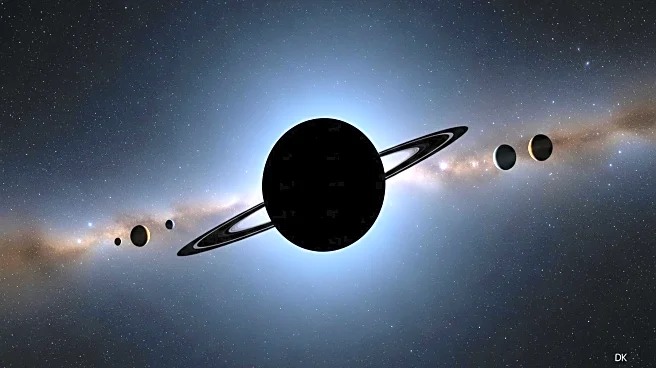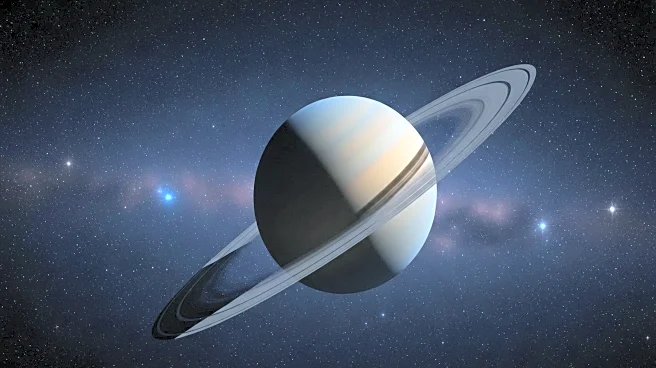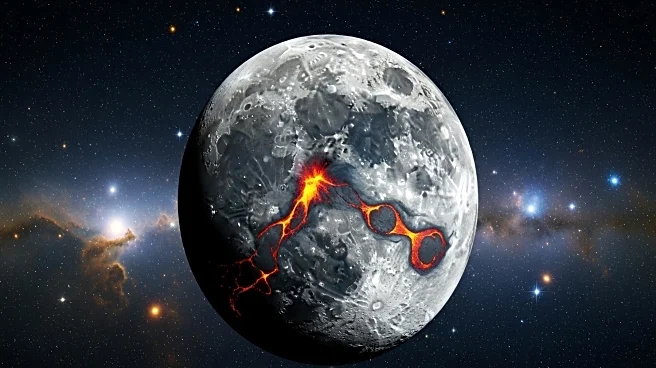What's Happening?
Astronomy enthusiasts are in for a treat as Titan, one of Saturn's moons, and its shadow make their final transit across Saturn until 2040. This celestial event is part of a series of astronomical phenomena occurring from October 3 to 10, 2025. The transit will be visible on the night of October 5/6, with Titan crossing Saturn's northeastern limb around 9:25 p.m. EDT. The shadow will appear on Saturn's disk at 12:26 a.m. EDT, crossing the northern polar region. This week also features other notable events, such as the overlap of Jupiter's moons Io and Europa, and the Full Harvest Super Moon, which is both a Super Moon and the 2025 Harvest Moon.
Why It's Important?
These astronomical events offer a unique opportunity for both amateur and professional astronomers to observe rare celestial phenomena. The Titan shadow transit is particularly significant as it will not occur again until 2040, making it a must-see event for sky watchers. The Full Harvest Super Moon, being both a Super Moon and the Harvest Moon, adds to the excitement, providing a brighter and larger appearance in the sky. Such events can inspire interest in astronomy and science, encouraging educational activities and public engagement with space exploration.
What's Next?
Following these events, astronomers and enthusiasts will continue to monitor the night sky for other significant occurrences. The overlap of Io and Europa on Jupiter and the visibility of Comet C/2025 A6 Lemmon, which is approaching naked-eye visibility, are also on the radar. These events provide ongoing opportunities for observation and study, contributing to our understanding of the solar system and beyond.
Beyond the Headlines
The occurrence of these celestial events highlights the dynamic nature of our solar system and the importance of continued observation and research. They serve as a reminder of the vastness and complexity of space, encouraging curiosity and exploration. The events also underscore the role of technology in astronomy, as telescopes and imaging equipment are crucial for capturing and studying these phenomena.











